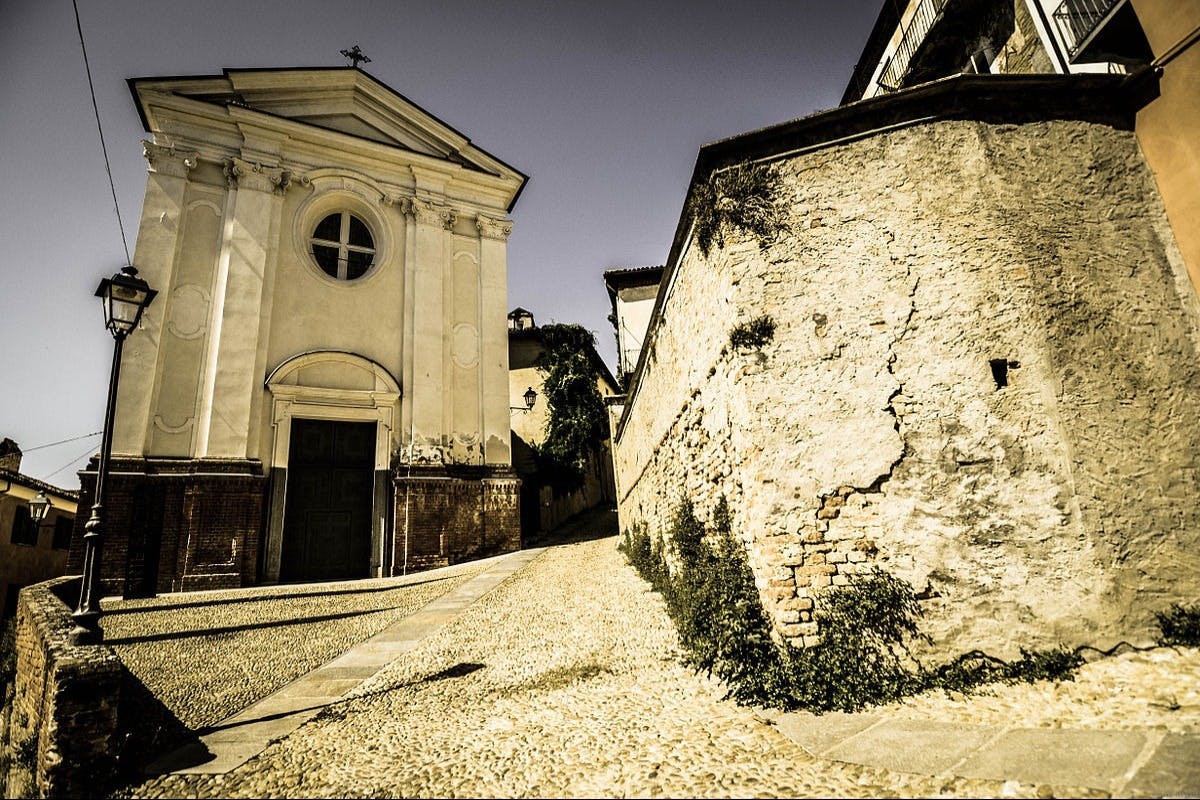Costigliole d'Asti - The Confraternity of Saint Jerome
The Museum of Sacred Art

The ancient confraternity of Saint Jerome was originally called of Holy Cross but the reason for the name change, dating back to about 1580, is still a mystery or perhaps it is attributable to the Asinari family of Costigliole, whose members often bore the name Jerome. The association had its own private oratory in the historic center of the village, for prayers and for the celebration of Sunday mass. It had also an annex building, for meetings and preservation of goods, wheat and wine.
It was known as the confraternity of the White Battuti, to distinguish itself from the nearby Church of the Mercy of the Black Battuti and due to the color of the dress that the confreres had adopted. With time passing, it was affiliated to the famous confraternity of the Roman Gonfalon and became one of the largest religious associations in the south of Asti. For this reason, in the middle of the seventeenth century, the brothers felt the need to move into a larger building and in 1662 the first stone was placed of the current building devoted to Saint Jerome. The parish priest Ponzio blessed the church in 1673, although the erection works ended only in 1681. Subsequently the sculptor Domenico Prete from Asti realized the great wooden entrance portal, while the marble altar, probably the most imposing of Asti, with monumental statues in white marble of Carrara representing the saints Peter and Paul, was initiated by Giuseppe Maria Carlone and completed by Giovanni Pietro Tadei in 1700. The altar was adorned in 1711 by an extraordinary oil-on-canvas altarpiece depicting Saint Jerome in ecstasy and painted by the artist from Ticino Giuseppe Antonio Petrini.
At the entrance of the church, in 1705, the master builders Antonino and Francesco Maria Gatto built the masonry tribune, embellished with white stucco by Antonio Bellorro and decorated by the painter Caterina Arellano Borio from Costigliole. The last major embellishment work dates back to 1880, and was the construction of the magnificent neo-baroque bell tower. The brotherhood managed to keep itself active until 1970, the year when the last chaplain Father Giovanni Testore dead. After closure in 1997, the building was abandoned and fell into disrepair. The confraternity as a recognized ecclesiastical institution was extinguished in 2013 and its home building became the property of the parish Our Lady of Loreto. Currently the church, completely restored, hosts in its large rooms the beautiful Museum of Sacred Art that collects the artistic artifacts owned by the parish.